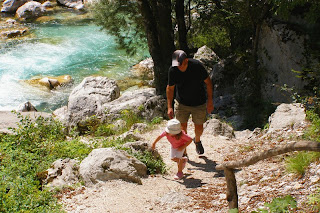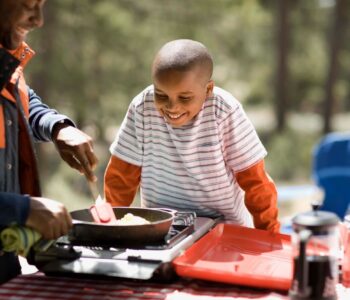 Hiking
Hiking
Hiking with Kids: Where to Go

Note: This is the first in a series of posts about hiking with children.
Hiking is a great way to introduce children to nature. Not only do the outdoors stimulate all the senses, it is great exercise (for grown ups too!). Going for a hike does not have to be a complicated activity, in fact, you and your kids can derive pleasure from just a simple walk in the woods. Go with your instincts and choose a place you think they will like. Try to think about it from their perspective – their sense of exploration and adventure.
The first “step” is to consider what places or trails are available to you. It might be a nearby park or forest, or maybe even a beach for nature center. The key is to choose a place that is easily accessible and nearby. You don’t want them to get bored on the way, nor do you want them to have trouble getting to the place where you plan to hike. Most importantly, be sure to involve them in the planning!
Hiking with kids always requires good planning. Below are some basic things to keep in mind as you decide where to go:
1) Consider their age – If your children are small enough, you can carry them in a specially designed backpack. If they are older, here are some pacing rules of thumb for children of varying ages (borrowed from Pine Mountain Trail Association): Children 2 to 4 years old can hike ½ to 2 miles on their own. They should stop every 10 to 15 minutes to rest. Children ages 5 to 7 can hike for 1 to 3 hours each day, covering 3 to 4 miles over easy terrain. Rest stops should come every 30 to 45 minutes. Eight and 9-year-olds can hike a full day at an easy pace, covering 5 to 6 miles over variable terrain.
2) Choose a place with varied terrain – For example, varied habitats, such as an area that changes from woods to meadows, are more interesting for kids than a flat field.
3) Don’t think too big – Do not expect to scale Mount Washington! Choose a place that is attainable so they (and you!) do not get discouraged. Climb a small hill or hike to a stream or pond.
4) Have a goal in mind – The top of that hill or the bank of the stream or pond are all great targets. It gives children something to think about on the way and they will look forward to it. Plus, they will feel a sense of reward when they reach their goal.
5) Make it challenging – Kids love to jump over streams, climb rocks and weave between trees. Find a place that offers challenges and you will not hear many complaints about boredom.
6) Make your hike into more than just a walk, make it and expedition. Plan to stop and look at things along the way, like a great view or a field of flowers. Point out interesting creatures and ask them questions about what they see.
7) Flexibility is key – Keep in mind that things may not go as planned. Your child may get tired sooner than you expect and many need to stop for a longer rest or an early lunch. They will also undoubtedly want to stop and investigate as they go.
If you take the time to plan before setting out, you will be prepared and your children will know what to expect. Good planning equals great times!
Be sure to check back for the next post in the series of Hiking with Kids. I will cover tips on what equipment and supplies to pack. Also, please comment and add any tips you have that I have not covered. Learning from others helps everyone!
Photo: FAMILY HIKING
© Rahela | Dreamstime.com



